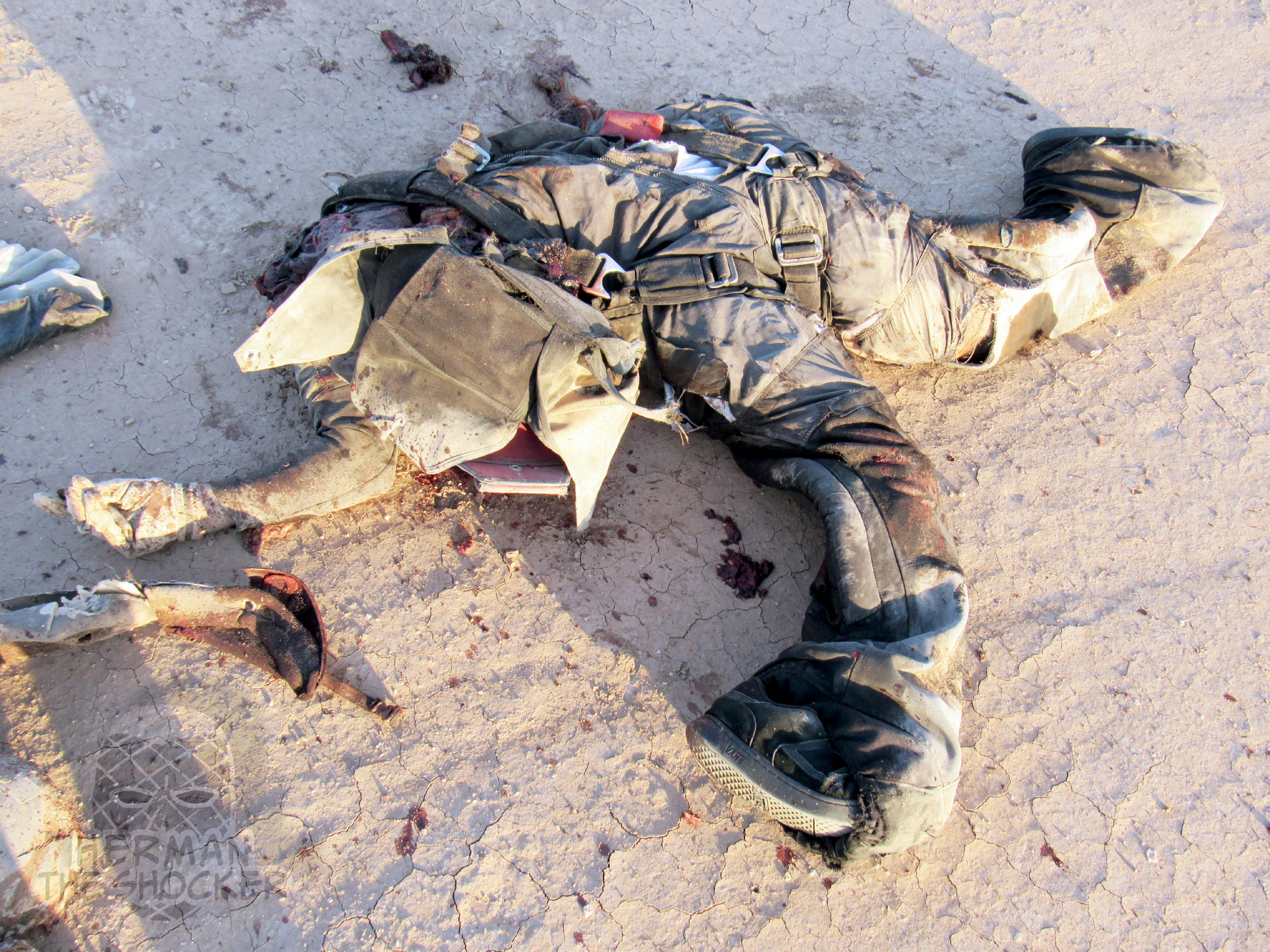There was no further info with the images except that this happened in Southern Arizona. From a study of parachute deaths that occurred in Southern Arizona over a 16-year period.
Parachuting is an activity in which a participant jumps from a plane or from height and consists of a period of freefall followed by the deployment of a parachute. While it is often performed as a thrill sport for pleasure as a bucket list item, some individuals compete in regional, national, and international competitions. Parachuting is also utilized for military training and operations. Parachuting is considered to be relatively safe, with only 21 deaths reported out of 3.2 million jumps in 2016 in the United States. Southern Arizona is a popular location for parachuting due to the clear desert weather and is home to one of the largest facilities for skydiving in the world.
In cases of massive fatal trauma from parachuting, the cause of death is usually relatively obvious when the body is viewed either at the scene (Figs.1-2) or on the autopsy table. Regardless, a complete autopsy provides documentation of the injuries, identifies significant natural disease, and provides specimens for toxicology. The injuries commonly found in other types of blunt force deaths such as motor vehicle collisions are commonplace in parachute deaths. Because of the similarities, these injuries are usually well documented by forensic pathologists. One limitation of this study is that extremity fractures were identified either by observation of compound fractures or palpation of the extremities and only rarely confirmed by postmortem radiography. Assessment of fractures of the extremities, especially the bones of the hands and feet, can be difficult to determine by palpation alone.
As long as parachuting remains relatively safe, this activity will remain popular. Even as technology evolves and additional safety features are instituted, human error will still lead to deaths while parachuting. Investigation of these deaths should include a complete autopsy with toxicology as well as a thorough scene investigation and evaluation of the jumper’s equipment.
Latest posts








